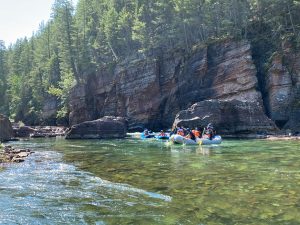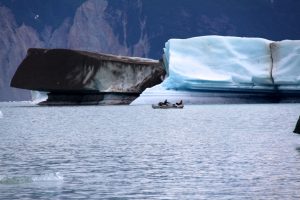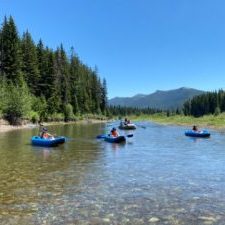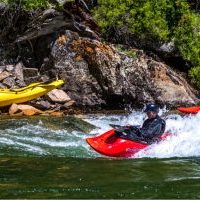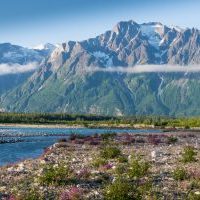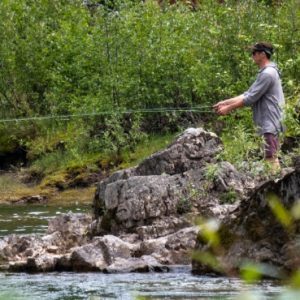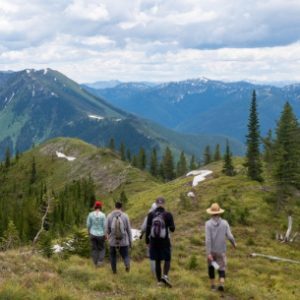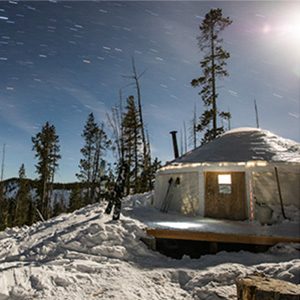The Owyhee: Desert River, Desert Stories
March 5, 2019
By Dove Henry
“If you want to study water, you do not go to the Amazon or to Seattle. You come here, to the driest land. Nowhere else is it drawn to such a point. In the desert, water is unedited, perfect.”
–Craig Childs, The Secret Knowledge of Water
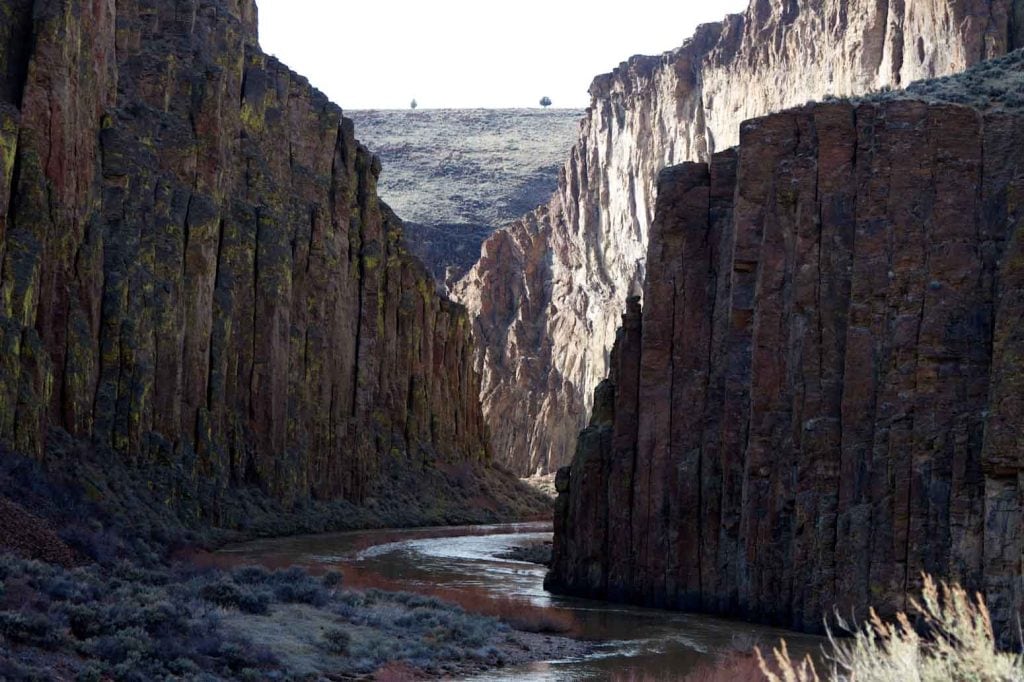
The light has shifted in the gorge. The wrens know it with their inscrutable animal intelligence; they have begun to chatter, their songs twisting up the canyon walls, radiating through its shadowy interior. Up on the plateau, the fragrant sage is growing as green as it ever gets. Arrowleaf balsamroot, brave and hardy, has already begun to flower, but other desert blooms bide their time, anticipating warmer temperatures. The river rolls, same as it has all night—that timeless, implacable sound of water flowing alongside itself, pushing against canyon wall, around boulder, through fissure. After some time passes, the first sun hits the rim of the canyon, and the rhyolite glows gold. Lingering suggestions of winter in the air echo and fade. It is a spring morning in the Owyhee Canyonlands.
The whole anatomy of this place and all the shapes that characterize it have been dictated by the movement of water over time. But looking out onto the Owyhee plateau—a sparsely populated ocean of grass, sage, and juniper—one could remain completely unaware of the river flowing deep beneath the continuous sweep of southwest Idaho rangeland. This wild and lonely tributary originates in northwest Nevada. It whittles a dramatic, narrow canyon through the highlands, continues into Southeast Oregon, and eventually descends into the Snake River Plain near the Oregon-Idaho border. To float the Owyhee River is to travel with this ancient natural force, to experience the stories it has etched into the land—a story of water in the desert, as vital as it is ephemeral. A story of a strange, dusky earth with unfamiliar continents, when glowing molten rock rose through the planet’s crust in southern Idaho, hardening, then eroding. A story of the ebb and flow of seasons, the natural world’s ceaseless change and motion, and a severe and seemingly impenetrable landscape made malleable by the forces of water and time.
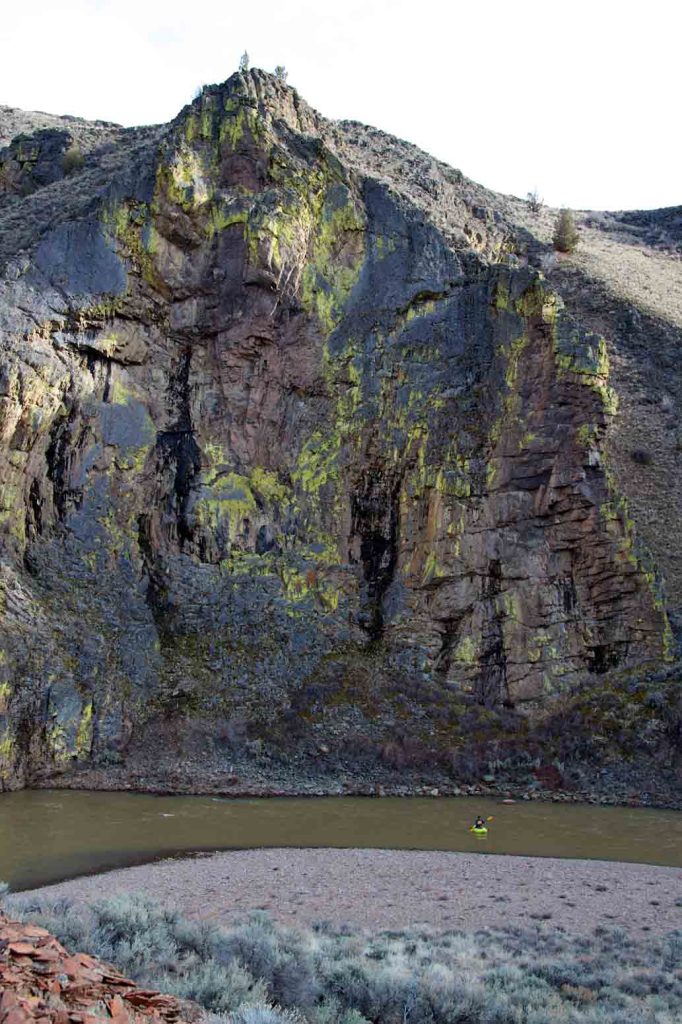
When traveling downriver through canyon country like the Owyhee, stories of the land and how it formed literally tower on either side of your boat—you are traveling with the primary agent of change in this land. About 16 million years ago, intense planetary forces activated in this area as the Yellowstone hot spot began to develop. The North American continent drifted southwest, and a wave of volcanism swept over modern-day Owyhee country. The eruption of rhyolite magmas melted from the earth’s crust resulted in the burnished, rust-colored cliffs you will encounter on the river. Basalt magmas from deeper within the earth rose through the surface, hardening into boulders, cliffs, and talus—artifacts from our planet’s mantle visible in our world on the surface, reminders of the sheer magnitude of the earth and all the potent, mysterious forces and substances pulsing within it. Of course, you can read all you want about geology. There’s nothing like being carried through the Owyhee canyon by a burst of springtime runoff to really get a sense for how water has forged the landscape around you.
The Owyhee carries other, more recent stories, as much about our own human brevity as the others are about the protracted timescales of nature. The desert does not invite permanence from humans; instead, it lends itself to the transient. Stone weapons, clay tools, and other ancient artifacts unearthed in this region indicate that the first people to inhabit it were semi-nomadic tribes appearing almost 15,000 years ago, ancestors of modern-day Northern Paiute, Bannock, and Shoshone. These hunter-gatherers roamed the canyonlands, searching for wheatgrass, fescue, and Indian rice to winnow and grind into flour. There are petroglyphs strewn throughout the river canyon—alien suns and trees, geometry from another world, inscribed into the rusty patina of talus. Numerous side hikes along the river provide the opportunity to get a closer look at the handiwork of prehistoric humans. The drawings indicate that early people also used this waterway to travel, as we so often do in canyon country, where water has worn a path through otherwise impassable terrain.
By the 1820s, white men had arrived in Owyhee country: fur trappers traveling with Donald McKenzie through southern Idaho, a region they called “Snake Country.” The river’s name—Owyhee, the original Polynesian, phonetic version of “Hawaii,”—originates from this expedition, when three Hawaiian trappers from McKenzie’s group disappeared in the canyon. Fellow trappers suspected they had been killed by Indians. The human history that follows the expedition is filled with the same characters that inhabit many western stories. First, there were the indigenous, then there were the trappers, the explorers and frontiersmen, an influx of miners, Basque sheepherders, and all the hopeful but luckless homesteaders who arrived with their eastern sensibilities, attempting to make a life in a harsher, more arid landscape than they had ever known. You will encounter all sorts of relics in Owyhee country that impart a story about humans who passed through, but did not stay. Some used the river to travel in pursuit of plants or game, others came enticed by gold, still others attempted to make a life in the region. Most of them failed. The remnants of rough-hewn wooden homesteads can be seen in and around the canyonlands, collapsing in on themselves, the last haunting vestiges of an era when Euro-Americans came up against the force of the American West.
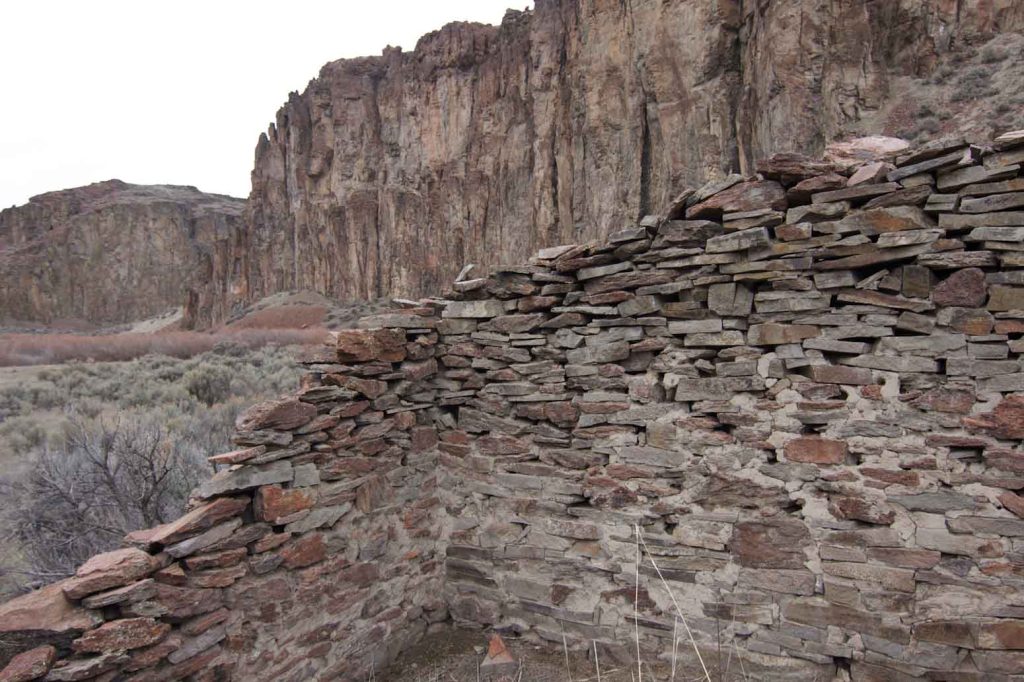
Once the white settlers fail to settle a land, after the prospectors’ fleeting stores of gold evaporate, when the indigenous people have been eradicated or relocated in one unfair, tragic way or another, what remains of a western landscape like the Owyhee? By the end of the nineteenth century, Americans began to call these places wilderness. Here is another story that hangs suspended in the canyon’s dry, desert air, like dust in sunlight—a shift in the way America conceived of wilderness, a word that has come to define this corner of the world, both in conversation and legislation. Before seminal thinkers like Leopold, Muir, and Thoreau, the word wilderness evoked barren wasteland, landscapes of desolation. It was used to describe undeveloped regions of little use to anyone. These places, like the Owyhee, proved resistant to the frenzied transformation of landscape into real estate that swept the country in the 1800s.
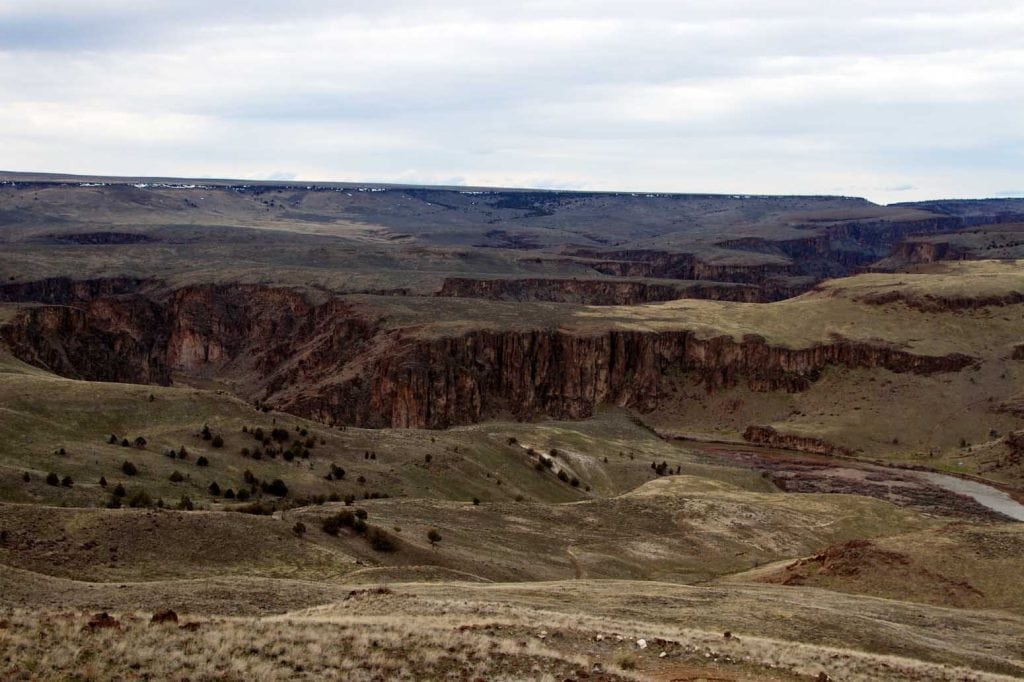
By the turn of the century, in the wake of manifest destiny’s decay, pristine “wilderness” occupied a sublime, nostalgic place in the American imagination. Wild landscapes offered the possibility of respite from civilization in a rapidly industrializing and urbanizing nation, and their protection became a source of national pride. In 1964, Congress gave us the Wilderness Act, legislating this new, American brand of wilderness with poetic language for a body of government: “an area where the earth and its community of life are untrammeled by man, where man himself is a visitor who does not remain.” Four years later, the Wild and Scenic River Act of 1968 was enacted. Under the act, Congress later designated hundreds of miles of the Owyhee and its tributaries as Wild and Scenic, preserving these stretches of the river in free-flowing condition. President Obama signed further legislation creating more than a half million acres of new wilderness in the area in 2009. Today, the Owyhee Canyonlands are renowned as some of the most wild and remote terrain in the lower 48. A river adventure in this vast, rugged area is just that—an adventure. The intensity of the desert has always mesmerized people. It is as beautiful as it is desolate, a truly boundless landscape, large enough to swallow you whole.
Many of the people who see this landscape today do so by floating the Owyhee River. The trip is a remarkable, singular way to experience the high desert and all the stories it holds. But running the Owyhee is more than just experiencing the desert as an observer, it is participating in the stories that continue to be written by the river’s current, imperceptibly wearing against stone from its spring surge to its end-of-summer trickle. There are new stories to take part in—stories about an American West with economies and ways of life in metamorphosis, bound by an increasingly virtual society. In a world that practically vibrates with the exchange of dizzying amounts of information and capital, boating the Owyhee brings us back to the physical. What is more real than the palpable forces of water and earth?
- Upper Owyhee April 11th – 18th (Garat – Three Forks) $2000/person
- Middle Owyhee April 19th – 22nd (Three Fork – Rome) $1200/person
- Lower Owyhee April 25th – 29th (Rome – Birch Creek) $1250/person
- Lower Owyhee Hiker Special May 2nd – 7th (Rome – Birch Creek) $1500/person
Dove Henry grew up roaming the fields and forests of upstate New York. Since graduating from Reed College in 2014, she has worked as a history teacher, waitress, trail builder, wildlife surveyor, maintenance technician, baker, ranch hand, parts runner, and most recently, as a wildland firefighter. When not musing over her next career change or posing as an outdoor recreationist, she can be found working and playing at Lost Trail Ski Area. Dove’s work has been featured in Appalachia Journal, the National Geographic Explorer Blog, ADK Magazine, Montana Quarterly, and the essay anthology Wilderness Voices.
